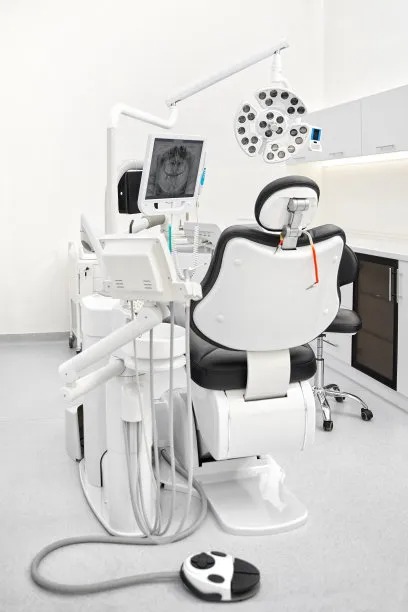Exploring Global Leaders in Dental Care How Different Countries Address and Treat Dental Issues Effectively
original:health91192025-04-16 11:59:14
Summary: The article explores how various countries across the globe lead in dental care by examining their unique approaches to addressing and treating dental issues effectively. Through analyzing th
Summary: The article explores how various countries across the globe lead in dental care by examining their unique approaches to addressing and treating dental issues effectively. Through analyzing the dental care systems of the United States, Sweden, Japan, and Brazil, we recognize not only the cultural nuances but also the policies and technologies that shape dental care practices. Each country presents distinct strategies, from preventive care to technological advancements, revealing valuable lessons applicable worldwide. This article aims to highlight the best practices in dental health and how these methods ensure the promotion of dental health in diverse populations.
1. United States: Emphasis on Preventive Care

The United States dental system places a strong emphasis on preventive care, recognizing that early intervention can significantly reduce dental issues. Regular check-ups and cleanings are often encouraged from a young age, instilling a culture of vigilance regarding oral health. Insurance plans typically cover preventive services such as dental exams and fluoride treatments, highlighting their importance in maintaining long-term dental health.
Moreover, educational programs are widely implemented across schools to teach children good oral hygiene practices. These initiatives ensure that children understand the relevance of brushing, flossing, and the impact of diet on their dental health. As a result, American children are generally more aware of their dental needs as they transition into adulthood.
In addition to preventive measures, the U.S. dental industry also embraces technological advancements. Innovations such as digital X-rays and laser dentistry enhance diagnostic accuracy and treatment efficiency, showing a clear progression toward modernized dental practices. This combination of preventive care, education, and cutting-edge technology underscores the United States as a global leader in dental care.
2. Sweden: A Model of Public Dental Health
Sweden’s dental care model is renowned for its accessibility and inclusivity, providing a strong example of a publicly funded system. The government finances dental treatment for children up to the age of 23, ensuring that young individuals receive necessary care without financial barriers. This approach significantly contributes to overall oral health in the country, as early treatment can mitigate more severe issues down the line.
Another key aspect of Swedens success in dental care lies in its focus on prevention and public health education. Citizens receive thorough education on dental hygiene from a young age, emphasizing the importance of a proactive approach to oral health. This culture of prevention is reinforced through regular outreach programs run by dental care professionals.
Sweden also capitalizes on its integrated health system, allowing for collaboration between dental and general health practices. This connection enables holistic patient care, addressing oral healths impact on overall well-being. By removing barriers to care and enhancing public education, Sweden serves as an exemplary model for nations seeking to improve their dental care systems.
3. Japan: Innovative Technology in Dentistry
Japan stands out as a leader in the integration of advanced technology within dental care. The country is heavily invested in research and development, exploring new methods and techniques that enhance both efficiency and patient comfort. From the use of computer-aided design and manufacturing (CAD/CAM) for dental prosthetics to augmented reality in orthodontics, Japanese dental practices are at the forefront of innovation.
The dental care system in Japan also emphasizes preventive treatments, similar to that of the United States. Regular screenings and advanced preventive technologies, such as cavity detection machines and oral health management apps, allow for early intervention, preventing more serious dental complications.
Additionally, Japans cultural attitude towards oral hygiene plays a significant role in its dental care success. The importance of maintaining good oral health is deeply ingrained in society, leading to high rates of dental check-ups. By marrying cultural values with innovative technology, Japan exemplifies how a country can transform its dental care landscape for the benefit of its citizens.
4. Brazil: Addressing Dental Disparities through Programs
In contrast to Sweden and Japan, Brazil faces significant dental care disparities due to socioeconomic factors. However, the country has made commendable strides in addressing these challenges through various public health initiatives. The Brazilian government promotes programs such as "Smiling Brazil," aimed at providing free dental services in underserved communities, showcasing a commitment to improving access to care.
Community health workers are vital in spreading awareness and educating the population about oral hygiene, significantly reducing rates of dental diseases across various demographics. Moreover, mobile dental clinics have been introduced to reach remote areas, ensuring that even the most isolated populations receive care.
Despite facing economic challenges, Brazil is increasingly leveraging technology, such as teledentistry, to enhance access to services. By utilizing virtual consultations, dental professionals can provide guidance and follow-ups, improving overall patient management. Brazils approach is a prime example of how targeted interventions can effectively bridge dental care gaps in society.
Summary: This exploration of global leaders in dental care illustrates the vast differences in approaches taken by various countries in tackling dental issues. The United States shines in preventative measures and technology integration, whereas Sweden exemplifies accessibility and public health initiatives. Japan leads in innovative technology, and Brazil demonstrates the importance of addressing disparities through community programs. These insights encourage countries worldwide to adopt successful strategies tailored to their unique contexts for better dental health outcomes.
This article is published by HEALTH9119 Medical Health Network https://www.health9199.com arrangement